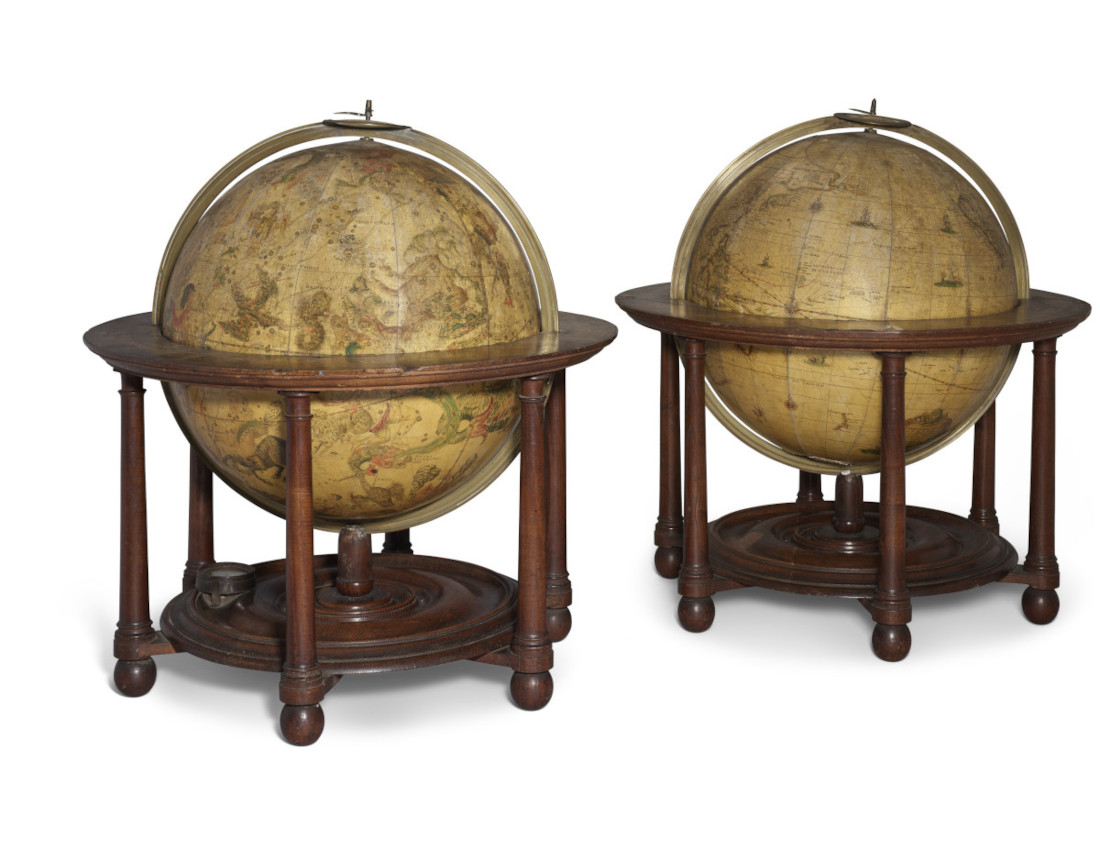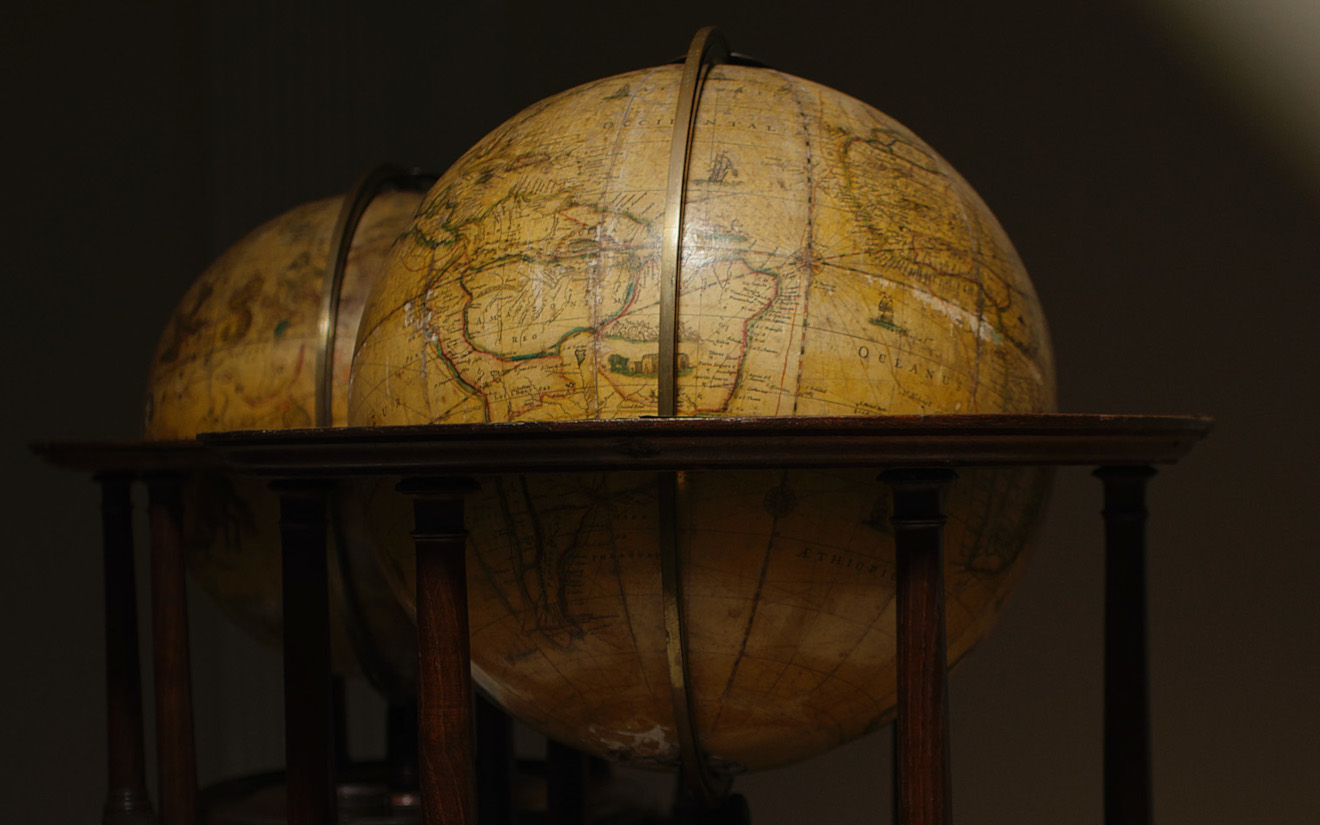An auction took place in London today that is sure to make history at Christie’s. Among the items up for sale was a pair of extremely rare English table globes from the late 17th century. Made by a trio of prominent London cartographers – Robert Morden, William Berry and Philip Lea – the globes are not just sophisticated scientific instruments. They are also true works of cartographic art. Auction of vintage globes at Christie’s is a unique event.
Auction of vintage globes at Christie’s
Measuring 21 inches (53 cm) high and 14¼ inches (36 cm) in diameter, these globes are impressive examples of late 17th century technology and geographic expertise. They are the fruit of precise work that involved printing 12 elliptical map segments (known as gore) and two round hats for the top and bottom of the globe.

They were then carefully glued onto a 14-inch ball of plaster. Edges and borders were marked in watercolor, and the most important cities were highlighted in gold. Christie’s vintage globes auction offers chance to get real rarities. And their value is practically priceless.
History and context of creation
The creators of these globes – Morden, Berry and Lea – were not the first to create a printed globe in England. This art was inaugurated by Elizabethan cartographer Emery Molyneux in 1592. However, by the time Morden, Berry and Lea began their work in London, the cartographic market was dominated by the Dutch.
Value and investment
The estimated value of this pair of globes was between £100,000 and £150,000. This reflects their historical, scientific and artistic significance. Investing into such items is not only a way to enrich a collection, but also a strategic investment move. Over the years, the value of such unique artifacts often increases, especially if they are in excellent condition and have a documented history.
Why globes are absolutely unique
Christie’s historic globes auction is a special event. Indeed, they are among the oldest surviving pairs of English globes still in private hands. Their condition is almost perfect – the meridian rings are still rotating, the hour circles are still attached to their poles. The paper strips and horizontal circles have only minimal scratches and fading.
The accuracy and ingenuity of these globes reflect the empirical approach to the observed world that flourished in England during the Restoration. Illustrations of indigenous communities, exotic animals, ships and sea monsters add to their unique character, highlighting the fascination of scientists and explorers of the time.
Significance for science and culture
These globes are also of great importance to the history of science and culture. They were used as educational tools and an indispensable item in the libraries of learned gentlemen. Their accurate maps, based on contemporary sources rather than ancient texts, reflect the latest geographic knowledge of the time. Images such as California as an island or incomplete maps of Australia and New Zealand show how rapidly knowledge of the world was developing.





